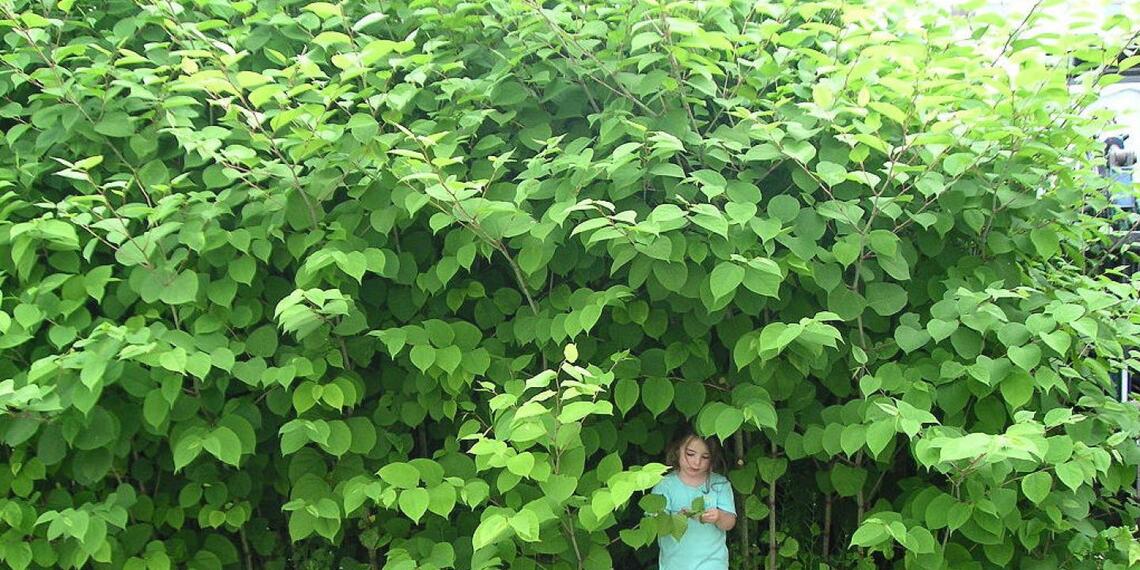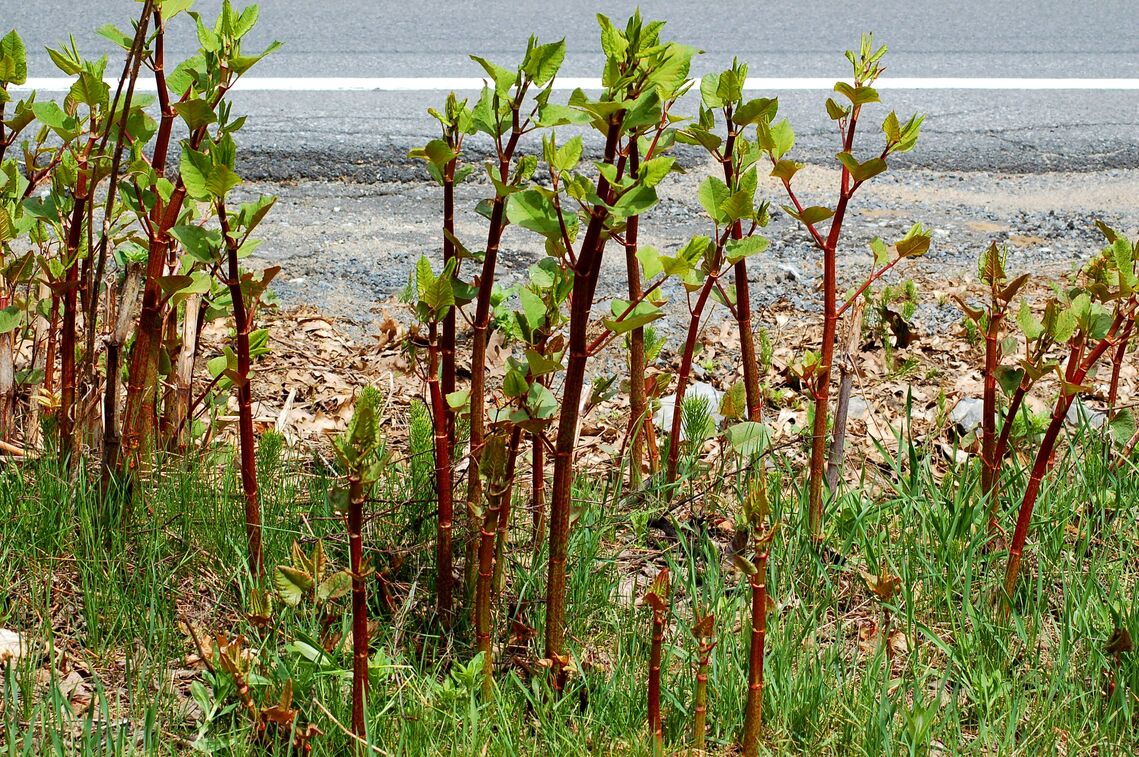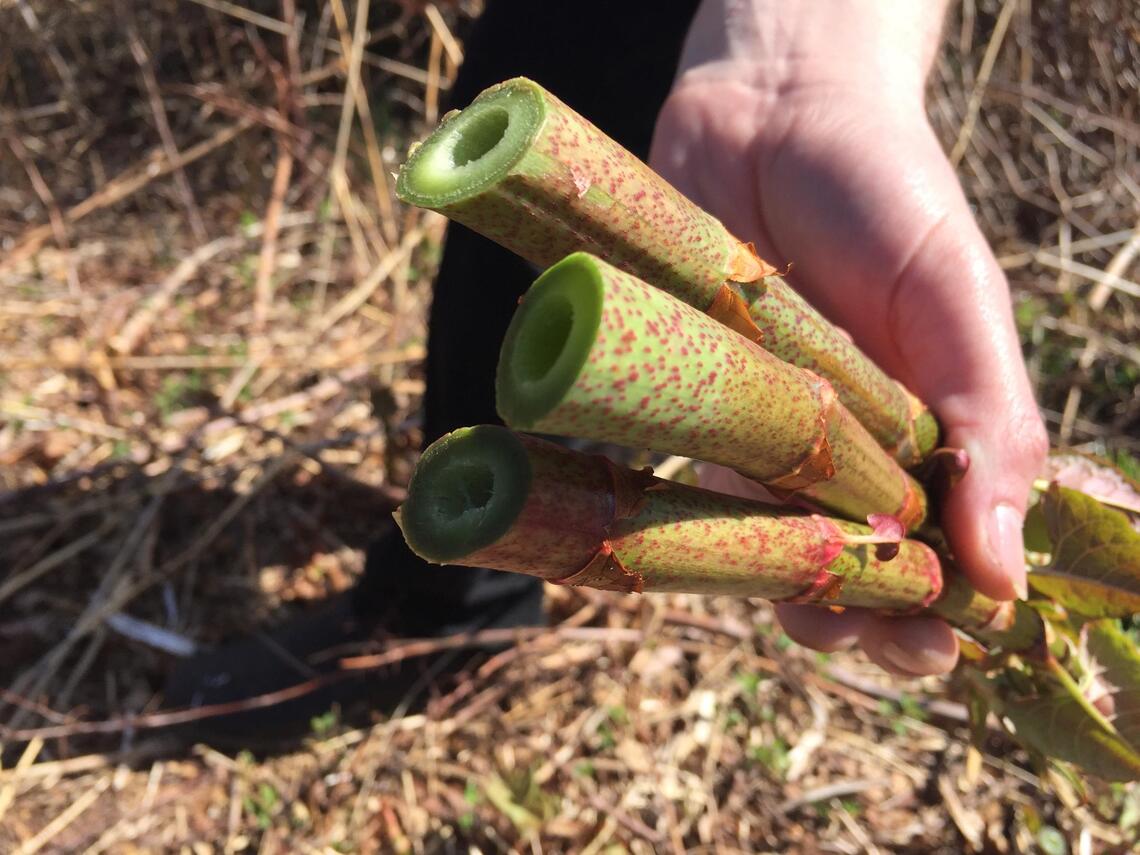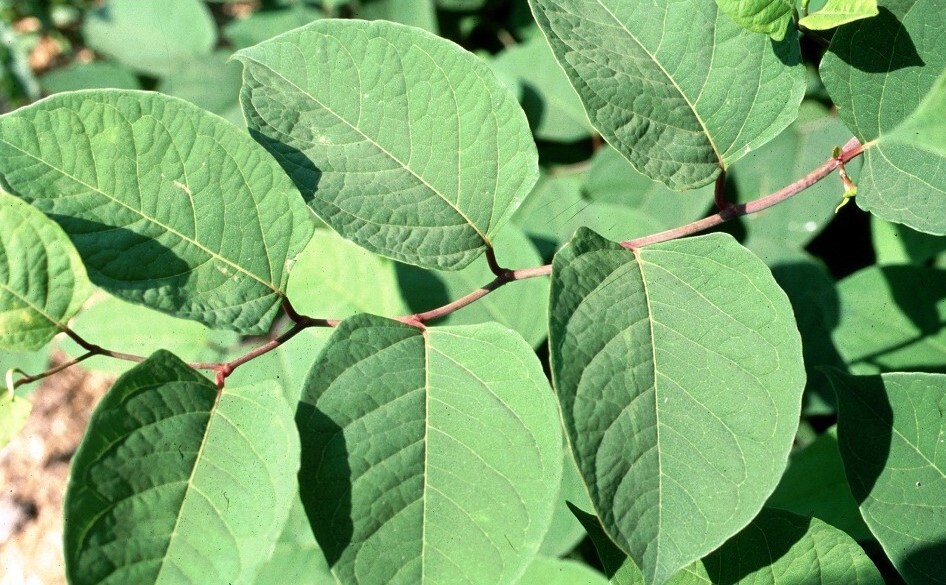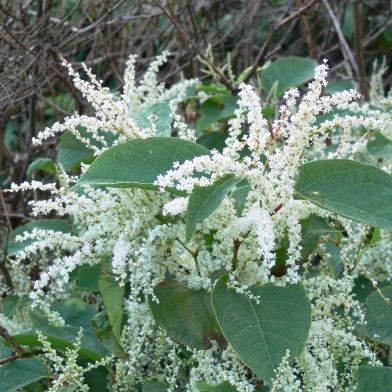Japanese Knotweed, also known as Reynoutria Japonica or Fallopia Japonica, is a non-native plant and is extremely invasive and difficult to eradicate.
At one time the Ham Lands were severely affected by many large, dense stands of it. The Council mounted a major eradication program in the 1990s and, thankfully, this highly expensive venture was a great success. Inevitably over the intervening years a few small clumps did re-established and these were dealt with by specialists prior to last winter’s (2019/20) scrub clearance.
You may notice some small areas marked with red and white tape; these may indicate a treated patch so that it can be monitored for regrowth, or mark a newly reported patch.
Unfortunately, we have one of the latter near the diagonal path from Croftway to Teddington Lock. Please leave it alone.
Reporting Japanese knotweed on the Ham Lands
Please contact Friends of Ham Lands and we will be happy to pass the message on to the Council.
Do not attempt to clear it yourself, it needs to be eradicated by professionals otherwise it will spread and be even worse than before.
Recognizing Japanese Knotweed
Japanese Knotweed grows in clumps.
Stems - These are cane-like and often reach 2m tall. They are usually speckled with red, rather like rhubarb sticks. The younger stems and side branches typically have a zigzag shape, with one leaf attached at each angle. The dead canes remain standing throughout the winter.
Leaves - These are mid-green and triangular to heart-shaped, c 12x10 cm. The tip is pointed and the base straight across (not curved up where the leaf-stalk is attached).
Flowers - creamish-white catkin-like clusters or spikes of small female flowers occur in August.
Text by Diane Bridson

